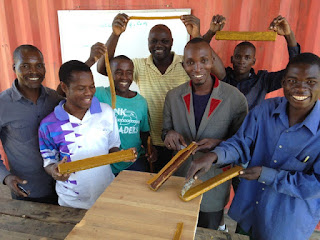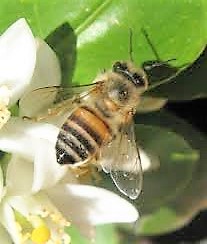Honey harvesting to beekeeping: Part II in which decreased VAB* correlates with increased honey production
Entrepreneurship and Beekeeping Training
We sent beekeepers from 2 villages in southern Tanzania (Lulindi in Masasi region and Ndechela in Lindi region), for beekeeping and entrepreneurship training.
In Dar es Salaam, they had 5 day-long sessions about entrepreneurship with an NGO called Restless Development. https://restlessdevelopment.org/country/tanzania/
In class.
The trainers, at either end, had been trained by Internatio
nal Labor
Organization and tailored the course to beekeeping, and to the beekeepers
education level.
After the entrepreneurship training was completed, they rode a bus across the country to Sumbawanga for an intensive training at www.africanbeekeeping.com/ Africanbeekeeping.com focus their training upon helping local small-scale and subsistence farmers utilize materials common in their homes for beekeeping and honey processing.
Here the students are showing the wax starter strips they have made.
Searching for the queen.
Separating the honey from the wax.
After the trainings they returned to their villages
What happened then?
The beekeeping groups returned to Lulindi and Ndechela. They placed their new top bar hives in the protected government forests near their homes. They placed the hives in their Forest Reserves and in a few weeks bees moved in.
Table. Decreased VAB* is correlated to increased honey production
*VAB – Violence against Bees, usually through hive destruction or fire. Estimated 25,000 bees lost per hive.
The above table shows the results from Lulindi. Before training they were using bark hives which are very fragile. At each harvest the hive would be destroyed; all the bees would be lost. In addition they were harvesting very little honey, and making very little from it.
Honey harvesting takes place every six month in Tanzania. Six months after training in November 2017, they checked the frames and found them full of brood, so they returned them. They waited to harvest til June 2018 but found all the hives were still full of brood, so the combs were returned to the hive. They reasoned, once the larvae hatched they would be available to make more honey.
The next harvest, the collected 110
litres and made 825,000 shillings. Most recently I heard the number of hives
had increased to 50 and several other villages had become involved.
Decreased Violence against Bees is correlated to increased production.
Note: Appreciation to World Learning who supported this project through the Advancing Leaders Fellowship. https://www.worldlearning.org/pressrelease/world-learning-announces-2016-advancing-leaders-fellows/
1-2021, S Burlington








Comments
Post a Comment